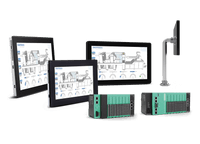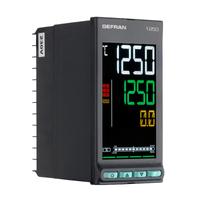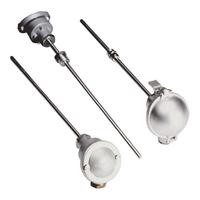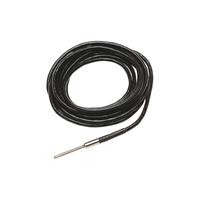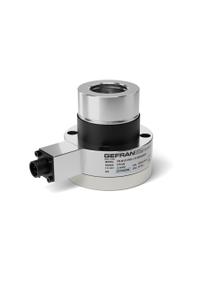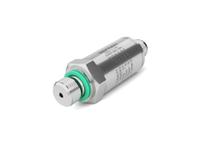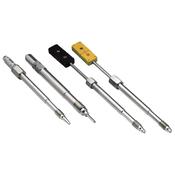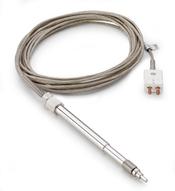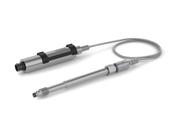Flat head extrusion is a well-established technology for manufacturing flat products such as plastic films (used, for example, for thermoformed disposable cups or trays), rigid sheets (such as plexiglass) or honeycomb cardboard (for lightweight and easily transportable containers). These materials are used in packaging, construction, automotive and other sectors that require rigidity, lightness and strength.
This extrusion technology makes it easy to mass-produce batches of products that can then be cut or wrapped around reels. A feature of the flat head is that it usually conveys multiple extruders, so it can create a product where the visible sides and the internal filling are made of different materials. The machine also allows precise control of thickness and surface quality, offering versatility for different polymers and configurations.
Requirements:
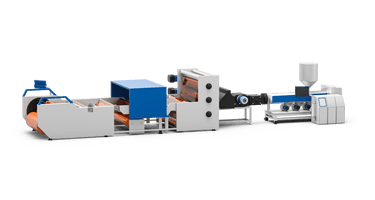
Control of the extrusion process
Learn more
Temperature control
Learn more
Melt temperature measurement
Learn more
Sheet thickness
Learn more
Haul-Off Tension
Learn more
Flow control through the melt pump
Learn more
Dirty filter detection
Learn more
Temperature control in the stabilisation zone
Learn more
Monitoring of the hydraulic circuit
Learn more
Enhancing Production Data
Learn more
Operating Principle
The flat head extrusion process to produce sheets, films or honeycomb cardboard is developed through well-defined phases to ensure a uniform product with controlled thickness.
The polymer, in granules, is continuously fed into the hopper, to ensure a constant supply of material. Since there is no dispenser, the extruder is described as having a “hungry mouth,” because the screw draws in the material from the hopper continuously and evenly, ensuring uniform and uninterrupted plasticisation.
Inside the plasticisation chamber, the heated screw transforms the solid granules into a homogeneous and fluid melt, ready to be processed. Unlike control through material quantity dosing, here the flow rate of the molten material is mainly regulated through a melt pump located downstream of the extruder. This pump allows the operator to precisely manage the amount of material reaching the flat head, ensuring a constant pressure and a stable flow.
The melt coming from one or more extruders is then pushed through the flat head, a rectangular die designed to distribute the material evenly over the entire width of the product, maintaining constant thickness and flatness.
After exiting the die, the hot sheet or film passes over the cooling rollers, which solidify the material while preserving its shape and dimensions. In the case of honeycomb cardboard, a complex air blowing system expands the sheet to provide the desired shape. At the end of the cooling process, the towing system “pulls” the product with constant speed and tension, delivering it to the storage preparation point, where it can be wrapped around a reel or cut and stacked as slabs.
Requirements and Technology
Flat head extrusion requires precise coordination of process variables and mechanical actuators, with the aim of ensuring operational stability, consistent quality and the reduction of waste. The criticality lies not only in the extrusion recipe, but in the system’s ability to ensure balance between interdependent parameters such as screw speed, melt temperature, pressure and line synchronisation.
Among the main requirements are multi-zone temperature control (essential to maintain constant viscosity and prevent surface or dimensional defects) and the direct monitoring of the temperature of the molten polymer, which allows a more accurate control of rheological behaviour compared to the cylinder readings alone. Other fundamental requirements concern the control of the thickness of the slabs, obtained by precisely positioning the calender rolls, and the management of the tension applied by the towing system, to ensure uniformity without breakage or wear.
Dimensional consistency is further guaranteed by flow control via the melt pump, which stabilises the pressure downstream of the extruder, while filter monitoring preserves product quality by preventing clogging and unwanted variations. Lastly, the control of temperature in the stabilisation furnaces ensures the relaxation of internal tensions, and the monitoring of the hydraulic circuit further improves the safety and reliability of the system.
Gefran responds to these needs with a complete range of integrated solutions, from the G-Mation control platform to thermal regulators, from melt sensors to position and force transducers, which guarantee efficiency, continuity and constant quality in flat head extrusion.

